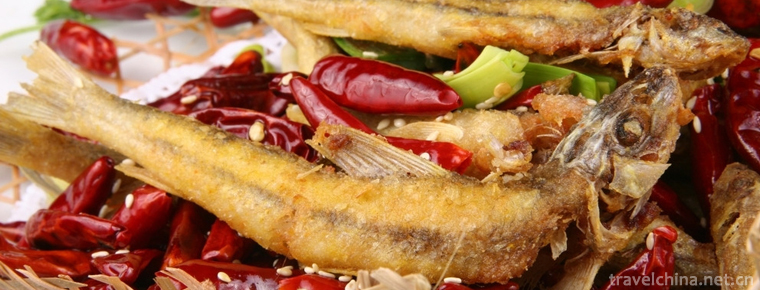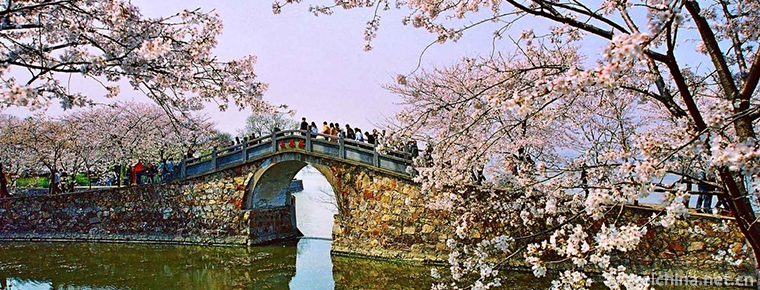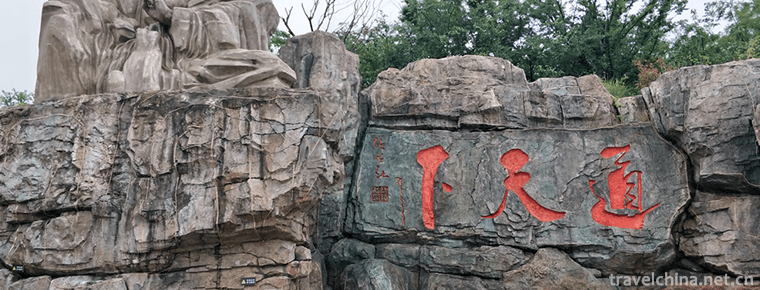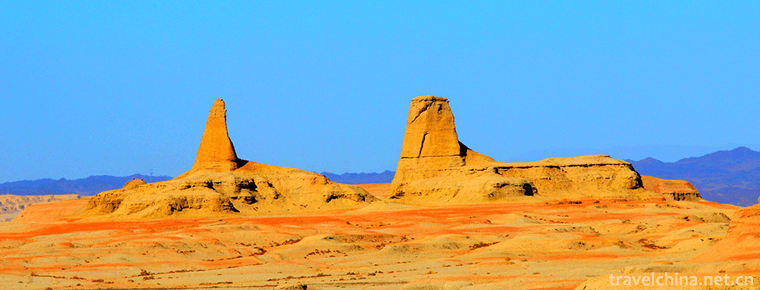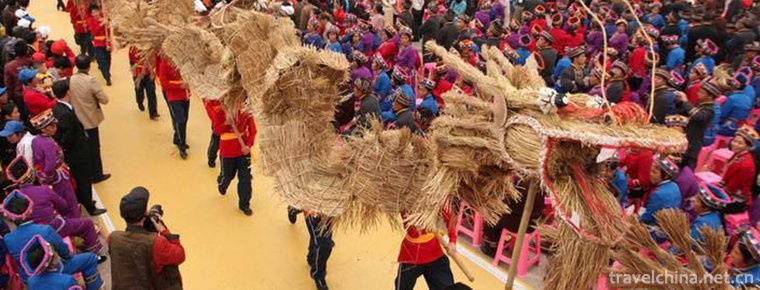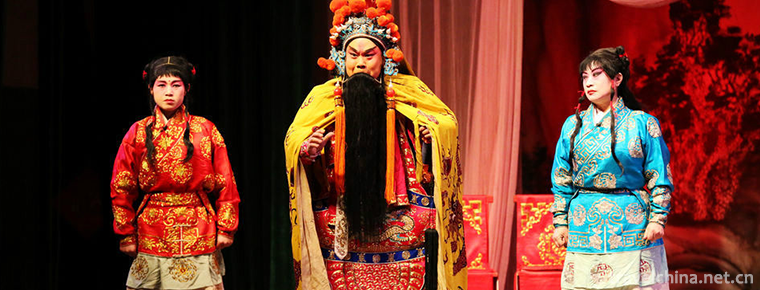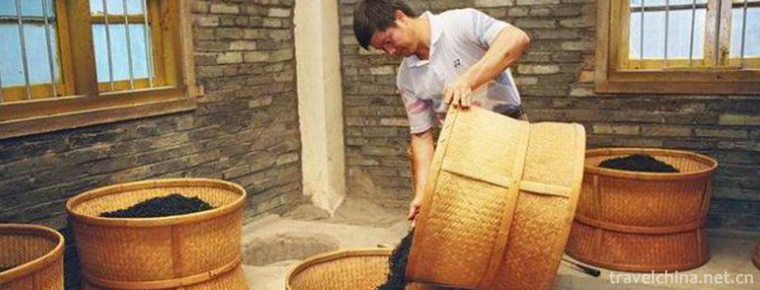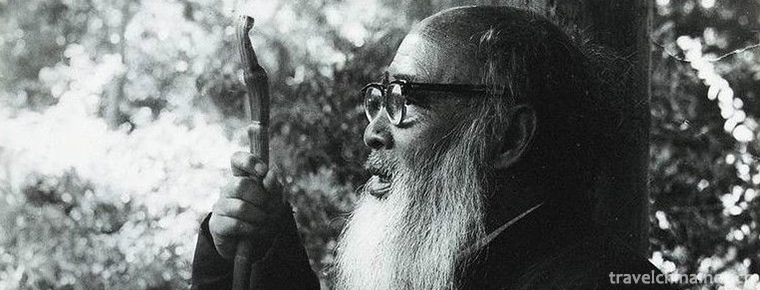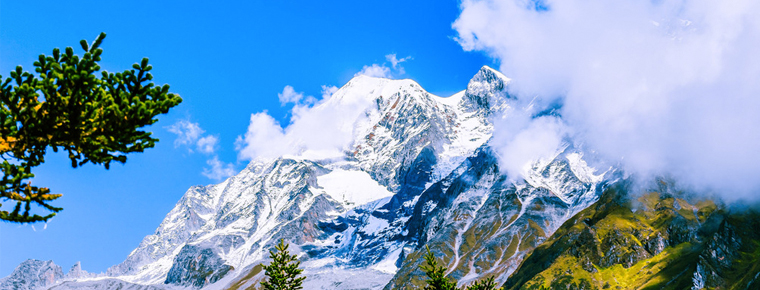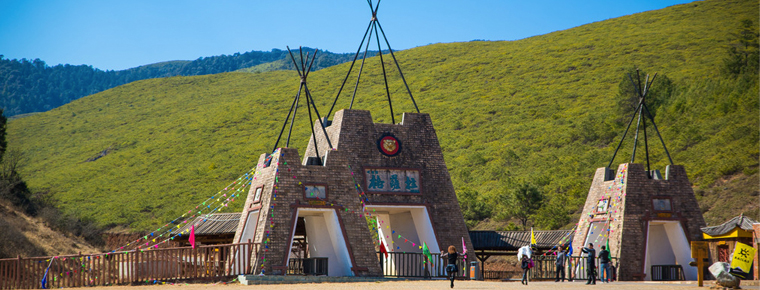Mung bean soup
Mung bean soup is a soup boiled with mung bean and water as the main ingredients. It has the functions of clearing heat, detoxifying, quenching thirst and relieving heat. Mung bean soup is rich in nutrients and is a kind of soup with high economic value and nutritional value.
Mung bean soup is a traditional Chinese summer holiday product. Mung bean soup has a variety of cooking methods, with a variety of flavors, the most important are coix seed mung bean soup, Lily mung bean soup, pumpkin mung bean soup and kelp mung bean soup.
Every 100 grams contains 22.1 grams of protein, 0.8 grams of fat, 59 grams of carbohydrates, 4.2 grams of crude fiber, 49 mg of calcium, 268 mg of phosphorus, 3.2 mg of iron and 1.8 mg of carotene. Vitamin B1 0.52 mg, vitamin B2 0.12 mg, nicotinic acid 1.8 mg. The main proteins are globulins, which contain less methionine, tryptophan and tyrosine. The phospholipid components of mung bean include phosphatidylcholine, phosphatidylcholine, phosphatidylcholine, phosphatidylcholine, phosphatidylcholine glycerol, phosphatidylcholine serine and phosphatidic acid.
Clearing away heat and detoxifying, relieving summer heat, eliminating irritated, quench thirst and stomach, relieve swelling with water. Mainly treat heat and thirst, damp-heat diarrhea, edema, abdominal swelling, sores, swelling, erysipelas, gills, acne and arsenic poisoning.
Heat clearing
Mung beans are hot in the skin, so in order to clear the heat, do not cook long mung bean soup. This mung bean soup is green and clearer. When you drink, you don't need to eat beans together, so you can achieve a good heat clearing effect.
Detoxification
The detoxification of mung bean is included, so in order to detoxify, mung bean soup is best to cook mung beans. Such mung bean soup is cloudy and cloudy, and it has a bad effect on relieving summer heat, but it is more effective in clearing away heat and detoxifying.
Summer heat
Mung beans and other foods cooked together, the curative effect is better, such as mung beans and honeysuckle soup: mung beans 100g, honeysuckle 30g, decocted and taken.
Promote metabolism
The essentials of making
1. boiling time should not be too long, boil for 3~5 minutes, with clear green soup is better.
2. take a stainless steel pan and add water. After boiling, add the mung bean and cover the lid. After 3 minutes, scoop out the soup and put it in the big white bowl. The soup is green, clear and transparent. This is the real color of mung bean skin boiled.
3. reduce oxidation and cook on lid.
4. Avoid cooking in an iron pot because flavonoids in mung beans react with metal ions, which interfere with the antioxidant ability and therapeutic efficacy of mung beans, and discoloration of soup juice.
5. When boiling mungbean soup, the skin of mungbean falls off naturally. Many people will throw the skin of mungbean out, which is a pity. Mung bean skin, cold and sweet, can solve heat toxin, its heat clearing and detoxicating effect is stronger than mung bean kernel. Mung bean skin contains a lot of antioxidants, such as flavonoids.
6. When boiling mungbean soup, it is suggested that the ratio of mungbean to water is 1:10. The mungbean should be boiled into green clear soup in boiling water and separated into bean soup. The soup is not only an antiheat drink, but also an antidote. When boiling soup, the mung beans are fished out to cook porridge for food; when stewed with the mung beans, the meat tastes and tastes good, and the mung beans can also decompose the toxins in the meat products.
Quick boiled mung bean method:
Wash mung beans and put them into a thermos bottle and pour them into boiling water. After 2-3 hours, mung beans will swell and soften, pinch hands to see if they are soft or not. If they are soft and then boil in a pot, it will be easy to boil mung beans in a relatively short time. If it is not soft enough, it needs to continue to soak, so that the mung beans cooked well will easily rot.
Therapeutic effect
1. Enhancement of protein and phospholipids in mung beans can stimulate nerves and increase appetite, which is necessary for nutrition of many important organs of the body.
2. The polysaccharides in hypolipidemic mungbean can enhance the activity of serum lipoproteinase and hydrolyze triglycerides in lipoprotein to achieve hypolipidemic effect, thus preventing and treating coronary heart disease and angina pectoris.
3. Cholesterol-lowering mungbean contains a globulin and polysaccharide, which can promote the decomposition of cholesterol into cholic acid in the liver, accelerate the secretion of bile salts and reduce the absorption of cholesterol in the small intestine.
4. Anti-allergy According to clinical experiments, the active ingredients of mung bean have anti-allergic effect and can treat allergic diseases such as urticaria.
5. Antibacterial, antiviral mung bean can inhibit Staphylococcus and some viruses, and can resist infection, clear heat and detoxify.
6. Protecting kidney mungbean contains rich trypsin inhibitors, which can protect liver, reduce protein decomposition and reduce azotemia, thus protecting kidney.
Mung bean seeds and water decoction contain alkaloids, coumarins, phytosterols and other physiological active substances, which play an important role in promoting the physiological metabolism of humans and animals.
Edible notes
1. belongs to the cold constitution. People with cold limbs, abdominal distension, diarrhea and other symptoms are not suitable to drink mungbean soup, but eating mungbean will aggravate symptoms, and even cause other diseases.
2. old people, children and weak people. Because the protein content of mungbean is more than that of chicken, macromolecule proteins need to be converted into small molecule peptides and amino acids under the action of enzymes in order to be absorbed by human body. This kind of people's digestive function is poor, and it is easy to cause diarrhea due to indigestion.
3. people taking all kinds of drugs. The detoxification effect of mung bean stems from the combination of mung bean protein and organic phosphorus and heavy metals. However, these detoxifying ingredients also decompose the efficacy and affect the treatment.
4. do not drink on an empty stomach. Mung bean soup is cold and fasting is bad for your stomach.
5. the mung bean soup, the person who refuses spleen stomach deficiency cold, is not good for the body.
Often heard people say: "eat Chinese medicine can not eat mung beans, in order to avoid antidote." "Compendium of Materia Medica" said: "mung bean smell cold, non-toxic...... Solution of all herbs, cattle, horses, stones and all kinds of poison. Folk cooking mung bean soup is often used as a first-aid means for drug poisoning. Therefore, the statement that mung bean and Chinese medicine can not be served together have been handed down.
Mung bean itself is a traditional Chinese medicine which can eliminate heat and detoxify. If you suffer from febrile venereal diseases such as exogenous wind-heat, carbuncle erysipelas, heat invasion and so on, you can take mung bean soup as usual when taking traditional Chinese medicine, which has complementary effects. If you suffer from gastrointestinal weakness, limb acidity and fatigue, chills, lumbar and leg cold pain, fecal diarrhea and other symptoms should fasting mung bean. Otherwise, it will not only reduce the efficacy of drugs, but also aggravate the condition. It can be concluded that mung beans can not be eaten as a whole when taking traditional Chinese medicine. It should be determined by the cold and heat deficiency and the nature and taste of traditional Chinese medicine.
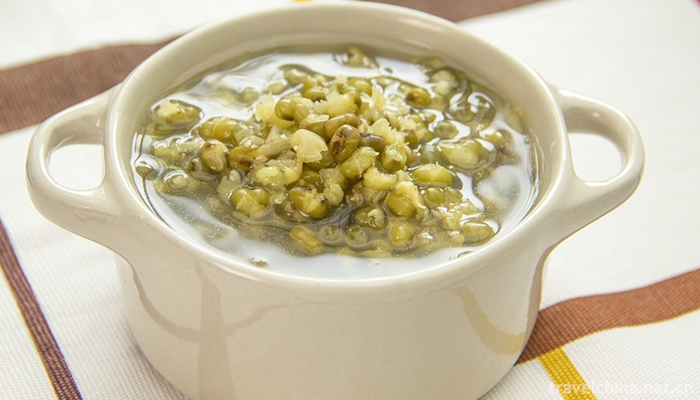
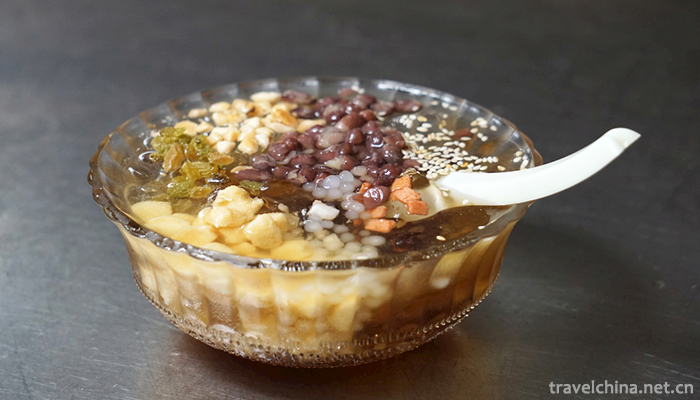
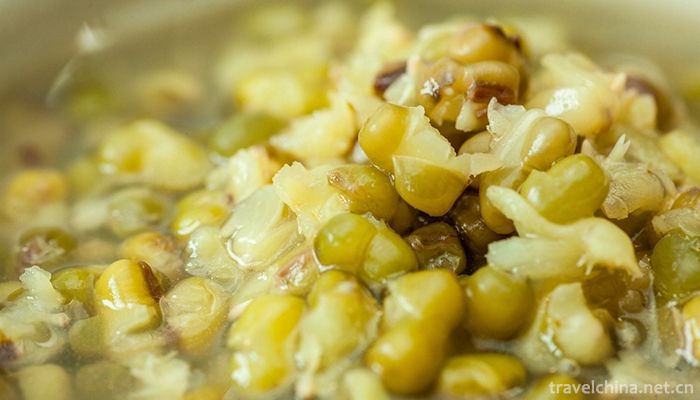
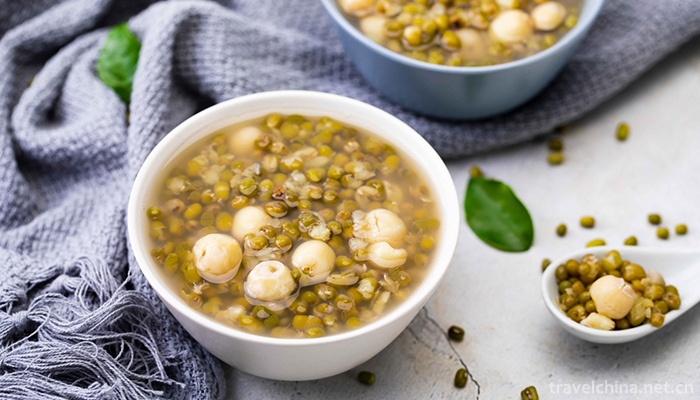
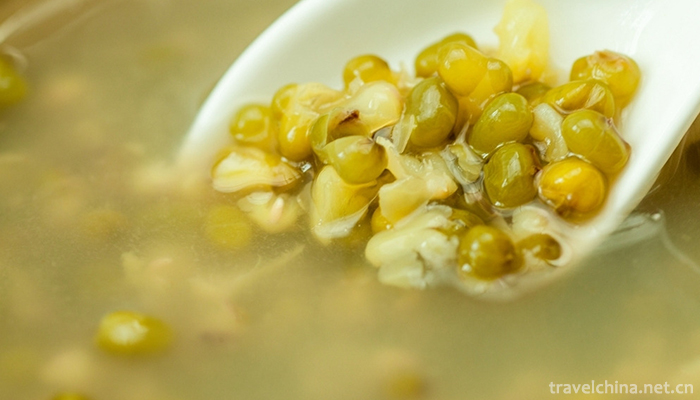
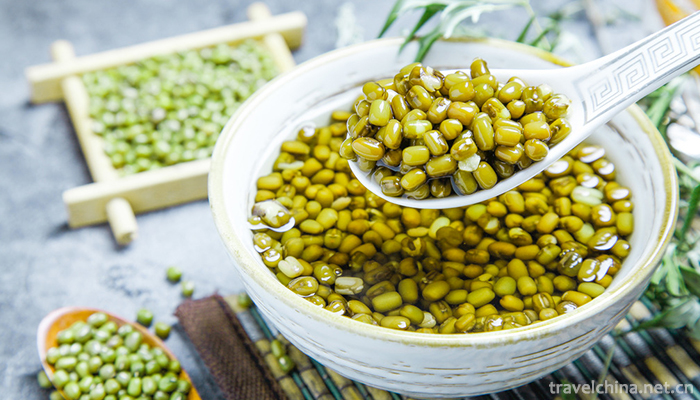
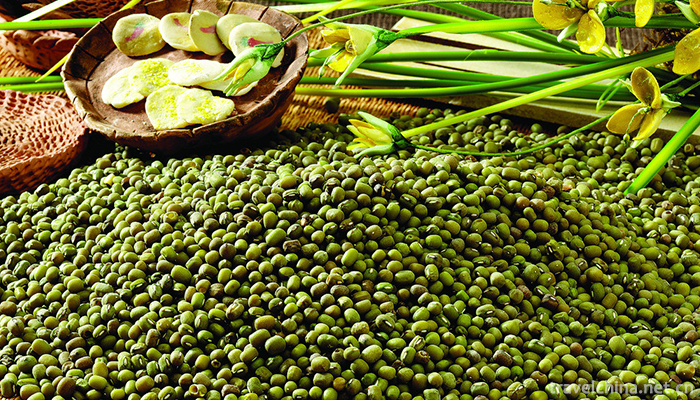

Mung bean soup
-
Dali arched fish
Dali aToxoplasmus dali, commonly known as fine-scaled fish
Views: 266 Time 2018-10-17 -
Turtle Head Islet
Yuantouzhu is a peninsula lying on the northwest coast of Taihu Lake in Wuxi. It is named for its huge stone bursting into the lake in the shape of a tortoise with its head held high. Yuantouzhu
Views: 210 Time 2018-12-06 -
Mount Maoshan
Maoshan is located in Jurong City, Zhenjiang City, Jiangsu Province. It is about 10 kilometers long from north to south, 5 kilometers wide from east to west, and covers an area of more than 50 square
Views: 225 Time 2018-12-06 -
Kanas Scenic Area in Altay Area
Kanas Scenic Area is located in the middle section of Altai Mountain in Xinjiang, which is located in the border area between China and Kazakhstan, Russia and Mongolia
Views: 124 Time 2018-12-12 -
memorial ceremony for Confucius
The sacrifice to Confucius is a grand sacrifice ceremony held mainly in Confucian temples for the sake of revering and remembering Confucius, which is a miracle in the history of world sacrifice and h
Views: 145 Time 2019-05-05 -
Mulao Effort Festival
Mulao people mainly live in Guangxi Zhuang Autonomous Region and call themselves "Ling" and "Jing". Yifan Festival is a unique traditional festival of Mulao nationality, with a str
Views: 120 Time 2019-06-06 -
Shijiazhuang Silk String
Shijiazhuang silk string is also known as string tune, string tune, Hexi tune, small drum tune, Luoluo tune, daughter tune and so on. It is a local traditional drama in Hebei Province and one of the n
Views: 192 Time 2019-06-15 -
Production Techniques of Dahongpao of Wuyi Rock Tea
Wuyi Rock Tea (Dahongpao) production technology, local traditional handicraft in Wuyishan City, Fujian Province, one of the national intangible cultural heritage.
Views: 158 Time 2019-06-30 -
Beijing Foreign Studies University
Beijing Foreign Studies University is located in the West Third Ring Road north of Haidian District, Beijing. On the two sides of the three ring road, there are two East and West campuses, which are d
Views: 163 Time 2019-09-06 -
Gongga Mountain
Gongga Shan, also known as Minya Konka, is located in the south of Kangding, Sichuan Province. It is the main peak of Daxue mountain. There are 45 peaks with an altitude of more than 6000 meters.
Views: 130 Time 2020-10-13 -
Gesala Ecotourism Area
Gesala eco-tourism area is located in Yankou Township, walai Township, Wenquan Township and Qinghe Township in the northwest of Yanbian County, Panzhihua City. It is located at the junction of Sichuan Province and Yunnan Province.
Views: 379 Time 2020-10-15
